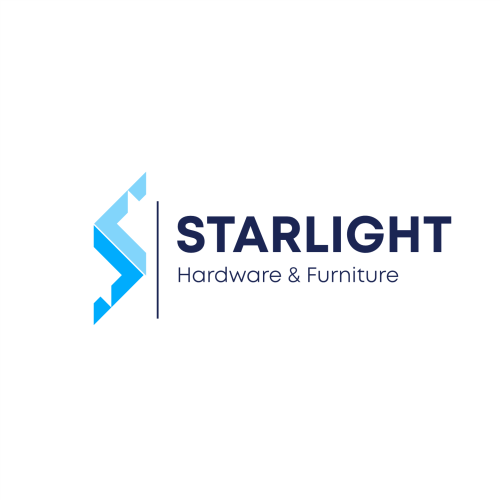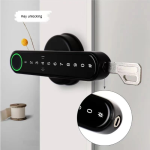System integration in security means tying together elements that range from locking hardware and fire detection to IoT sensors and audiovisual equipment into one coherent solution. Integrators bring cameras, access control panels and building automation under a single interface that lets data flow freely across devices and helps each component contribute to overall safety.
Teams vary in how they handle maglocks, electric strikes and electromechanical locksets. Some installers focus exclusively on maglocks and strikes, as they are most familiar with those devices. Others avoid locksets when project requirements or hardware complexity fall outside their comfort level. Integrators often meet a mix that includes standalone access controllers, master key systems and strictly mechanical locks. Each brings its own wiring, testing and maintenance steps that must be understood and coordinated before any unified installation can succeed.
Site surveys reveal tangled cable runs, incompatible protocols and non-centralized configurations that stall progress. Many commercial structures host eight or more separate security and life-safety systems that do not share data. That drives up labor, creates blind spots and increases the chances of misconfiguration during setup. Integrators forgo guesswork by documenting existing systems, mapping cable pathways and confirming device models before proposing any integration plan.
Planning gains efficiency when all stakeholders weigh in. In a large organization, HR, IT, facilities and public safety groups often own different pieces of the puzzle. Inviting each team to flag concerns about credential management, user access levels or reporting needs lays the groundwork for a single-platform design. Integrators can match technical requirements with policy objectives by capturing input from every corner of the business and translating it into a cohesive system architecture.
Failures in proper installation or component centralization frequently land on IT staff, locksmiths or the security integrator. Without one consolidated management platform, tracking faults becomes a blame game. Assigning access control operations to a single system reduces downtime, shrinks troubleshooting time and clarifies accountability. End users see consistent behavior at every door reader and badge swipe, and service teams move from reactive fixes to proactive upkeep.
Siloed departments still present a reality in many facilities. Business units guard their own hardware or data zones, and tunnels between teams can stay closed. Integrators step into that breach by drafting a stakeholder engagement plan. They assign roles, set milestones for checkpoints and circulate a clear scope of work. Everyone gains visibility into budget impact, scheduling constraints and compliance obligations when expectations are spelled out in writing.
IT personnel must have details on building codes, access-control standards and physical security protocols. A misaligned server setting can lock out emergency responders or prevent badge enrollment. The IT domain covers networking, directory services, firewall rules and more. Knowing where expertise ends and outside help begins keeps projects on track. Integrators who confirm team skills at the start can propose training, assign consultant hours or adjust the design to fit in-house capabilities.
Choosing the right hardware and software depends on what teams can support and maintain. Over time, access control has migrated from simple mechanical locksets to mobile credentials, cloud-hosted controllers and biometric readers. Each new technology layer adds flexibility and complexity. Integrators can access partner portals for firmware updates, consult vendor knowledge bases and test devices in demo environments to validate compatibility.
Locksmiths bring deep hardware know-how: installing strikes, electrified locks and mechanical cylinders. Integrators install control panels, wire power supplies, set up card readers, configure door controllers, connect video systems, interface fire panels and manage audiovisual devices. Partnering in that way splits labor so each specialist focuses on core strengths.
On some projects, a consultant or subcontractor may fill gaps in expertise. Methods vary: a security integrator might call in a specialist for cabling, or HR systems may stay separate pending a future integration phase. Outsourcing is common for audiovisual deployments, specialized door hardware or custom software hooks when in-house teams lack the tools to integrate every API or wiring pattern.
IT departments frequently handle access control at the network level. Their approaches range from full service in Active Directory to minimal support for standalone readers. Clarifying roles up front reduces confusion when grant or revoke requests start rolling in. That clarity cuts approval delays and helps end users know exactly where to turn for support.
Hands-on training from lock or panel manufacturers comes free with many product lines. Integrators who register employees for workshops gain familiarity with device firmware, IP addressing, encryption settings and factory defaults. Trade shows and short courses help bridge the gaps that surface between seasoned locksmiths and younger technicians familiar with software-centric approaches.
Manufacturers and distributors support integrators and locksmiths with certification programs. Options from Axis Communications, Avigilon and Gallagher Security cover topics such as PoE camera setup, network security hardening, card format options and panel interoperability. Certified staff find it easier to meet project requirements and avoid common configuration errors.
Combining classroom time with on-the-job coaching makes installers fluent in both hardware and network tasks. That dual skill set keeps projects moving and helps teams keep security current as threats evolve. Pairing veteran locksmiths with younger, tech-focused staff smooths mentorship, balances mechanical know-how and IT fluency, and builds a workforce ready for evolving standards.
Outside your usual circle lies expertise you can tap. During a panel discussion in Boston on best practices for team alignment, a speaker zeroed in on the importance of a reliable network of advisors, then delivered a memorable analogy:
“Individuals should maintain a roster of professionals, akin to a starting five in basketball.”
“This roster should include a project manager or consultant, IT personnel, integrators/locksmiths, lock and security manufacturers, and clients.”
Cybersecurity remains a significant threat to access-control systems. Integrators have a duty to deliver reliable service while making sure every badge presentation or biometric scan protects both people and property.



